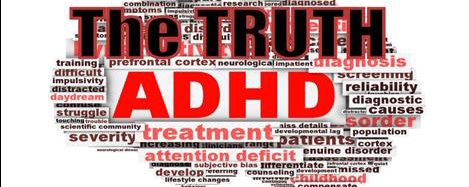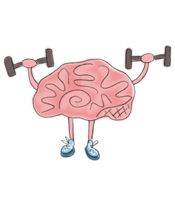Diagnosed with ADHD in early childhood, my elementary education was fraught with academic frustration and negative self-perceptions, brought on my faltering ability to intellectually keep up with my classmates. Labeled “slow” by my peers, I struggled with feelings of inadequacy, but, nevertheless, persevered throughout my early and middle education. Studying tirelessly night after night, and doing homework assignments until all hours of the evening, whilst fighting against frequent intermittent periods of inattention, I was able to successfully complete more and more of my assignments every day. This arduous process of improving my executive functions through seemingly unending bouts of practice, allowed me to excel pedantically, and, by middle school, resulted in my displacement from Special Education classes and into the general curricular schedule of my mainstream peers. What’s more is that, by the end of my middle school tenure, I had advanced so much so, that I was selected to participate in the Honors Curriculum during my high school education. Hence, my experience is a clear demonstration of the efficacy of self imposed cognitive training, and is a testament to the novel and groundbreaking theories concerning the plasticity of controlled attention and working memory.
Historically, working memory capacity has been considered a fixed trait of intellectual ability, present in its unique form from individual to individual across the population. Some recent research, however, has effectively debunked this long standing notion, demonstrating that working memory may be enhanced by cognitive training aimed at developing working memory. At this point, you may be wondering, what is working memory, and how is it relevant in discussing remedies for ADHD Symptoms? Well, simply put, working memory is an executive function describing the psychological processes by which information is temporarily stored and manipulated within the human psyche, usually for the purposes of solving problems and facilitating the acquisition of knowledge. Working Memory, then, is a crucial component of learning, and is required for a wide range of cognitive tasks and academic achievement (Klingberg). Moreover, studies aimed at pinpointing the etiology of ADHD symtomology, have affirmed that individuals suffering from the disorder possess deficits in Working Memory Capacity, as compared to their Non-ADHD counterparts. These deficiencies have largely been attributed to impairments of the frontal lobe, often exhibited by individuals diagnosed with ADHD. Hence, groundbreaking studies aimed at assessing the malleability of working memory hold promising prospects for treating ADHD symptoms, and improving the academic performance of those suffering from the disorder.
Nero-imaging research has begun to shed light on a “Common Neuronal Network”, consisting of Fronto-Parietal regions within the Human Brain, that are hypothesized to underly working memory capacity and controlled attention (“controlled attention refers to the allocation of selective attention” (Klinberg), and shares a functional and symbiotic relationship with working memory). Studies on the subject, by sources such as, Klinberg et. Al., Olesen et. Al. and others, have used cognitive training, predominately consisting of verbal and visuospatial working memory exercises to advance the activation and neuroconnectivity of this network, and, in turn, improve working memory capacity, attentional capabilities, reasoning skills, and ADHD symptoms. These working memory exercises consist of implicit training (a type of scholastic measure that uses repetition, feedback and trials of increasing difficulty to measure and develop working memory capacity). Some examples include:
- Digit Span Task: A verbal working memory measure, where in subjects are asked to remember and regurgitate a sequence of digits, through trials incrementing in digit length, adjusted to the proficiencies of the subject on a case by case basis.
- Span Board Task: a measure of visuospatial working memory, consisting of blocks being positioned on a brick, and requiring the subject to reproduce the positioning of such blocks.
Using the preceding exercises, and others like them, frequently and intensively, (usually 5 times a week for 45 min. a day, for a duration of 5 weeks or more), researches found that this type of cognitive training, in many cases, resulted in improvements on reasoning assessments, and non-practiced working memory tasks. (I.e. when subjects practiced solely verbal working memory tasks, enhancements transferred to visuospatial working memory tasks). These findings suggest that reasoning capabilities, attentional capacities and even a person’s IQ, can be further developed and bolstered through cognitive training that implements working memory tasks. Consequently, when such training is used in a scholastic setting, children, typically between the ages of 5 and 12, diagnosed with ADHD, often exhibit more executive control, and, hence, display diminished symptoms of inattention and hyperactivity.Though more research is necessary to further progress theories of working memory plasticity and establish proper guidelines for cognitive training, this pioneering research is potentially a monumental discovery for advancing novel remedial measures in the treatment of ADHD.


I blog frequently and I truly thank you for your information. This article has truly peaked my interest.
I will bookmark your website and keep checking for new details about
once per week. I subscribed to your RSS feed too.